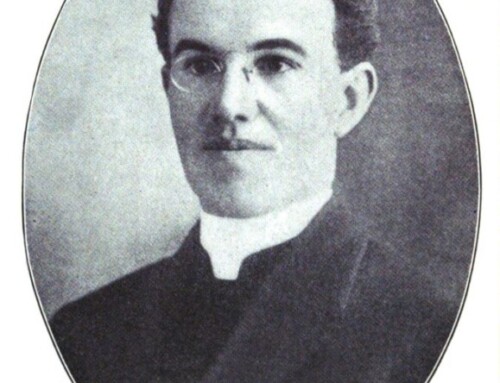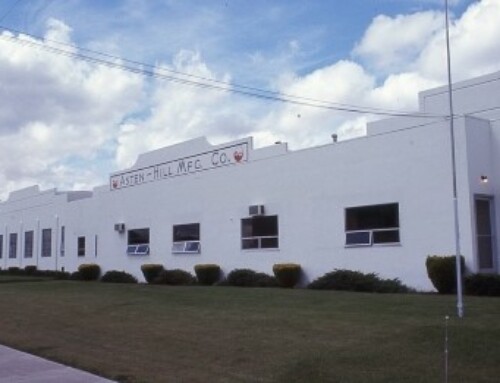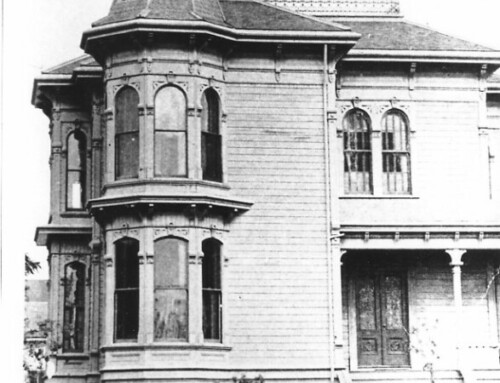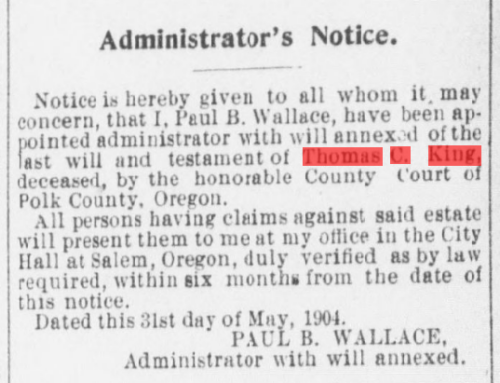 This article was published in the Statesman Journal, Sunday, May 5, 2013.
This article was published in the Statesman Journal, Sunday, May 5, 2013.
By Kylie Pine and Sara Beringer
This winter the Methodist Parsonage at the Willamette Heritage Center has undergone a makeover. In the process of re-carpeting, painting and researching for the new exhibits we have uncovered quite a bit of interesting information about the times and travels of one of Salem’s oldest buildings. The Parsonage may be one of the best travelled buildings in Salem, having been moved several times. Constructed in 1841, it originally stood just about where the water tower of the Thomas Kay Woolen Mill stands today; facing west towards the campus of what is now Willamette University. It housed the families of missionaries Hamilton Campbell and the Reverend Gustavus Hines who were responsible for overseeing the instruction and care of students at the Indian Manual Training School run by the Mission. The school, finished in 1842, stood where Walton Hall is today on the campus of Willamette University. If you are really intrepid, you can find a stone and plaque marking where the building stood until it burned in 1872. [2] [3] Hines recalled the original site of the parsonage as “…one of the most delightful locations in the whole valley. The fertile plains surrounding it, the enchanting nature of its scenery, and the fine water privilege afforded by the beautiful rivulet that meanders through it, render it a place of considerable future importance.”[4] When the Mission closed in 1844, the Parsonage was the only piece of property retained by the Methodist Church. [5] The building served as the dwelling for the pastor of the Methodist Episcopal Church in Salem until November 1865, when, in dilapidated condition, it was traded for a newer residence closer to downtown. One pert newspaper writer lamented: “Another of the old landmarks set up by the early pioneers, and made historic ground by so many associations, and rapid progress of American civilization on the Pacific coast, of which it was the first manifestation, has been given over to the demands of trade and manufacturing. The ‘old parsonage’ will be torn down, the beautiful oaks converted into common firewood, and in their place we shall probably see an oil mill, distillery, or some other manufactory.”[6] In fact the property was purchased by the Willamette Woolen Manufacturing Company and developed by the Pioneer Oil Company, lured by the potential power of the stream Hines had written so much about.[7] The Parsonage was not torn down but moved to what would become 1325 Ferry St and in its place grew a mill to produce linseed oil, a product derived from flax seeds and used in paints, varnishes and putties. The house served as a private residence and apartment building for the next eighty years.[8] This part of the houses history is a little more murky as many tenants moved in and out of the house. Volunteer Sara Beringer has gone through the city directories trying to discover more of this significant stage of the Parsonage’s history. Scores of tenants like Mamie Vrabel and Julia Lyons, may never have long biographies in the history books, but could tell a very interesting story about what life was like in Salem was like during the Great Depression. When the remodel is complete, their story will be included in new exhibits. As early as 1935, Burt Brown Barker began advocating for the preservation of the Parsonage. In a letter to Bruce R. Baxter, then president of Willamette University, he wrote: “I venture to affirm that there is no building standing in the Pacific Northwest with the historical significance of this one and it would be too bad to have it lost simply because at the present time it happens to have some old and unattractive washings on the porch.”[9] When the school district purchased the property under the Parsonage in 1953, the house was transferred to the Marion County Historical Society and moved to temporary storage on the grounds of the Thomas Kay Woolen Mill.[10] Many permanent sites were considered including the Oregon State Fairgrounds and Marion Square Park, Willson Park, Bush Park and the Willamette University Campus.[11] Ultimately, the Mission Mill Museum Association was founded and the restoration of the Parsonage was begun in 1966 and finished in 1969 on the grounds of the Thomas Kay Woolen Mill.[12] The Parsonage has seen few changes since that initial restoration project, although the landscape around it has changed drastically. The canneries to the south and west have been replaced with university buildings and the residential neighborhood to the north supplanted with school district buildings. The new exhibits in the Parsonage will offer an expanded discussion on the history of Salem, which the Parsonage most clearly witnessed. From the story of the Kalapuya curated by the Confederated Tribes of Grand Ronde to galleries that focus on women and children’s experiences in early Salem, the WHC will be able to tell Salem’s history as it never has before. You can get a preview of the new exhibits at the museum’s Sheep to Shawl festival, Saturday, May 11, 2013 from 10-4. Kylie Pine is the Collections Manager at the Willamette Heritage Center. Sara Beringer is a marvelous volunteer who has been tirelessly sifting through city directories to uncover the more recent history of the Parsonage. [1] The Jason Lee House, also on the grounds of the Willamette Heritage Center was completed before the Parsonage, making it the oldest house in Salem. The Parsonage was completed that same year. [2] Hines, Harvey Kimble. “Hamilton Campbell.” An Illustrated History of the State Of Oregon. Chicago; The Lewis Publishing Company, 1893, 624. [3] Special Report on Relocation of the Jason Lee House and Methodist Parsonage, 8 (Oriented West) [4] Hines, Gustavus. Oregon: Its History Conditions and Propects. New york: Miller, Orton & Mulligan, 1857 Pg 95 [5] Barker, Burt Brown. “The Parsonage A Heritage.” Marion County History, Volume 1. Quoting a diary entry from Reverend Gary dated June 26, 1844. [6] Oregon Statesman. 13 November 1865; “Church Progress at Salem” Portland Pacific Christan Advocate. November 18, 1865. [7] Oregon Statesman, November 20, 1865. [8] Maxwell, 7. Brown, 3. [9] Barker, Burt Brown. Letter to President Bruce R. Baxter. 25 February 1935. [10] Pollard, Ed Lancaster. Oregon historical Quarterly. LV.3 June 1954, 164. [11] McArthur, Scott. “Jason Lee Museum Planned.” Capital Journal 22 February 1961 pg 1 [12] “Restoration of the Methodist Parsonage”. Found in records file.







Leave A Comment